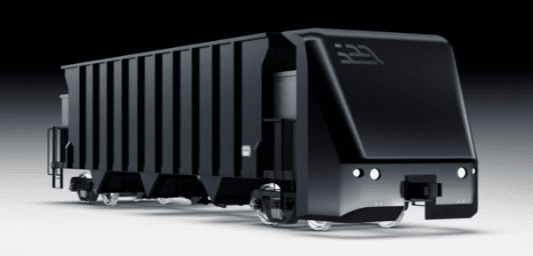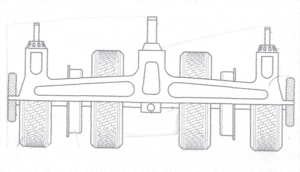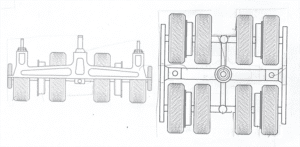AUTORRs
A critical component of an integrated rail and highway transportation system: vehicles equally capable of travel on road and rails? A wide variety of such vehicles have been proposed;
For example, vehicles those proposed by Silvertip Design Inc, Skeeby, Richmond, North Yorkshire, UK and Intramotev Inc, of St Louis, MO



Ideally, such vehicles would be easily transitionable between road and rail travel, and preferably autonomously drivable, at least for the transition and rail phases of travel.
Wheel sets to accomplish this might best utilize coaxially mounted road and rail wheels of different diameters, as seen for example in the patent drawings of US Patents 7,077,065 and 2,135,307 (Figures 1 and 2 respectively).
Transitioning of a truck supported by such wheels from roadway travel to railway travel, or vice versa, occurs at railway-roadway intersections where inclined road grades or ramps along the railway on either side of the intersecting roadway engage the truck’s roadway wheels as the truck approaches or leaves the intersection traveling in the railway direction.


As adapted to existing highway width and rail width infrastructure, a typical coaxial wheel set may be as shown(in rear view) at the left above, or be combined, as shown (in top view) at the right above, in pivotable bogies similar to those of conventional rail cars.
Wheel sets in any of these configurations would likely include automotive-type brakes in truck roadway wheels, thus rendering unnecessary the compressed air transmission lines commonly associated with conventional railroad couplers.
While the practicality of autonomously drivable trucks capable of highway and railway travel, as described conceptually here or as developed based on other concepts, remains to be proven, such developments would provide other benefits ancillary to the diversion of trucks from highways to railways. For example, trucks of this type could be operated individually on rail lines and in rail yards but more likely would be entrained for long range travel using remotely controlled couplers at the forward and rear truck ends. Such trains may or may not include a locomotive to provide some or all of the driving force for the trucks, thus allowing for overall minimization of energy usage in particular circumstances.